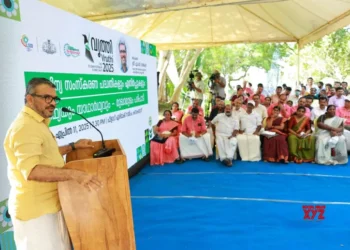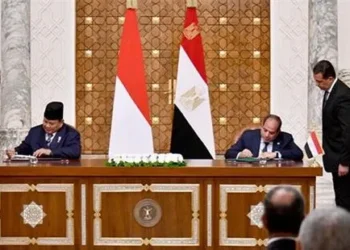Prime Minister Narendra Modi knows how to put across his message. He is quite strategic, often tricky but far-sighted; the medium of stating so or the occasions do not matter much.
This was one such case. Interacting with a group of young women students from Nagaland, the Prime Minister applauded the rich cultural traditions associated with the ‘Gaon Burah’ — village elders — institutions in the state and in the process made a big political statement and understandably this makes a lot of political sense too.
Is the Modi government keen to drive things the Kashmir way? Empowering local panchayats have been a long felt need in Jammu and Kashmir and subsequent governments at the Centre — even those headed by Congress believed so.
By 2016, it was learnt that the PMO took keen interest in the functioning of the influential and much respected Gaon Burah bodies in Nagaland.
R.N. Ravi as interlocutor was reportedly instructed to enlist the views of Naga people and villagers at the grassroots levels.
The ‘importance’ given to Naga Gaon Burahs did not go down well with many other established players in the existing power politics structures during the tenure of R.N. Ravi as the Governor.
Many, however, see empowering Gaon Burahs as a necessary reform strategy but difficult to implement as was perhaps the case even in Jammu and Kashmir.
In a conversation regarding food with a delegation of women students from Nagaland, the Prime Minister on Thursday (June 9) is learnt to have hailed the Gaon Burah bodies.
Modi was quizzed on what it is that he likes about Nagaland.
The ‘Gaon Burahs’ — as the word suggests in Nagamese or Assamese — are the village headmen. They are considered the eyes and ears of the district administration at the village level.
They are usually selected by the clan or ‘khel’ and the Village Councils forward the names to the state government and they are given a formal recognition with a red-blanket and are considered as ‘agents’ of the government.
The Gaon Burahs are vital links between far-flung villages and the government institutes.
The institution of Gaon Burahs actually dates back to the colonial era, when the British appointed the oldest person in the village as the head, who would be expected to oversee matters relating to land and revenue.
Modi is the only Prime Minister who had convened an interaction programme with the ‘Gaon Burahs’ of Nagaland in September 2020.
Notably, the Gaon Burah Federation is also taking keen interest in the ongoing peace process.
On peace parleys and alleged delay tactics, the Nagaland Gaon Burah Federation has earlier submitted a memorandum to the Prime Minister and insisted categorically that “there is no reason to account for the delay in concluding the ongoing phase of Naga peace talks”.
In March 2022 again, the leaders of Gaon Burah Federation joined other Naga organisations and students bodies and Naga Global Forum to assert that the state government and the Nagaland legislature ‘are not authorised’ to speak on matters beyond the Indian constitution and what is defined and legitimate under the powers of the state government.
The village elders have also backed pro-Solution NNPG led by N. Kitovi Zhimomi.
As part of the National Commission for Women initiative under ‘Ek Bharat Shreshtha Bharat’ (United India, Great India), the delegation of women students from Nagaland met Modi at his Lok Kalyan Marg residence on Thursday.
The students expressed their happiness at meeting the Prime Minister.
It may be mentioned that as peace interlocutor and Nagaland Governor R.N. Ravi also used to interact with the leaders of the Gaon Burah Federation quite frequently.
Sources have revealed in the past that by involving village elders, the Prime Minister and his government have sought to play a major game-changer. It’s almost the model tried in Kashmir.
Empowering the local administrative bodies — that is panchayats in Kashmir or Village Gaon Burah bodies in Nagaland — experts feel would be critical to improving the situations vis-a-vis insurgency and also resolve the problems in respective states.
Both the states are known for unending cycles of violence, protests over human rights and counter-violence by security forces.
In Jammu and Kashmir, even lately local panchayat polls were marred by violence and killings of some local leaders.
The first elections in the Union Territory of Jammu and Kashmir took place between November 28-December 19, 2020, in the form of by-elections to District Development Councils and municipal and panchayat level bodies.
In 2010, it is said that the former Jammu and Kashmir Chief Minister, Omar Abdullah had told the Manmohan Singh government that he would try to empower the local panchayats.
But, former Home Secretary G.K. Pillai told IANS in an interview in 2016 that “…..he got back to the Centre stating that there were hurdles as the MLAs were not allowing this to happen. If I take a sanguine stand, my chair will be at risk, Omar had then informed the UPA government”.
Pillai, who hailed from Kerala, had also said: “Considering the lack of powers of the panchayat leaders in Jammu and Kashmir, the rest of India seems a paradise. In my native state Kerala, though the state Assembly passes the budget, nearly 40 per cent of the developmental works and social welfare schemes are implemented by the panchayats. Hence there is no monopoly. That model is worth
emulating.”
Under the Modi government, the plan allocation for Panchayats of Jammu and Kashmir has doubled from Rs 5,136 crore in 2020-21 to Rs12,600 crore in 2021-22.
An insurance cover of Rs 25 lakh has also been provisioned for the elected representatives of all the panchayats. In fact, as many as 1889 Panchayat Accounts Assistants and 317 secretaries were recruited through the written test.
In Nagaland, last year the Gaon Burah Federation had submitted a list 8000 Gaon Burahs to then Governor Ravi. The Federation had also publicly opposed any demand for removal of Ravi from the gubernatorial post.
But Gaon Burahs do not have any major administrative or financial powers.
Similar village level institutions exist in Arunachal Pradesh also.
Therein along with the Gaon Burahs for men, there are also Gaon Buris (for female) who display immense responsibilities in ensuring that there is no corruption in the community and they also take part in ‘convincing’ land owners to accept reasonable compensation for land acquisition as lands acquired by official agencies are used for institutions for the people only.























